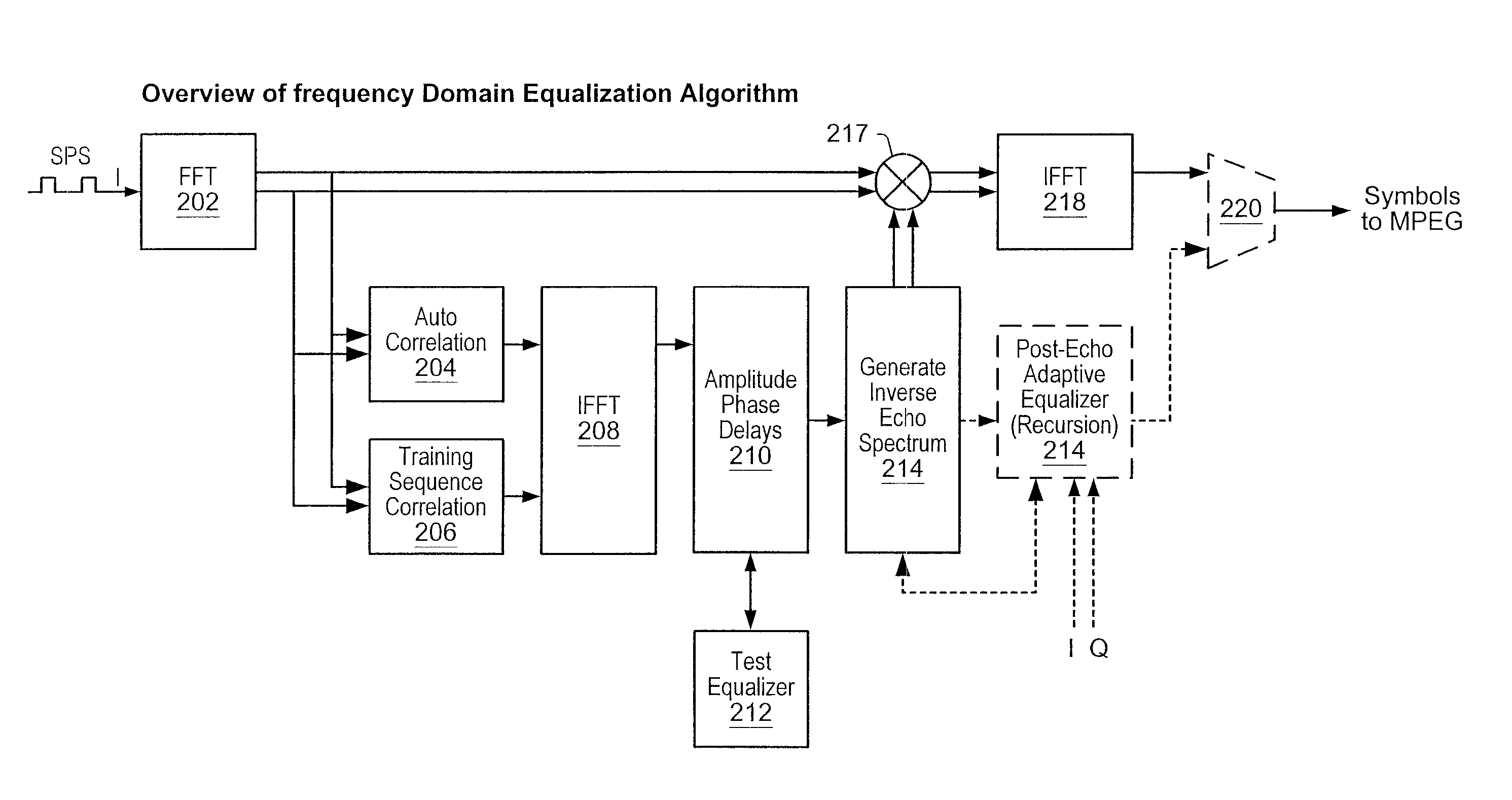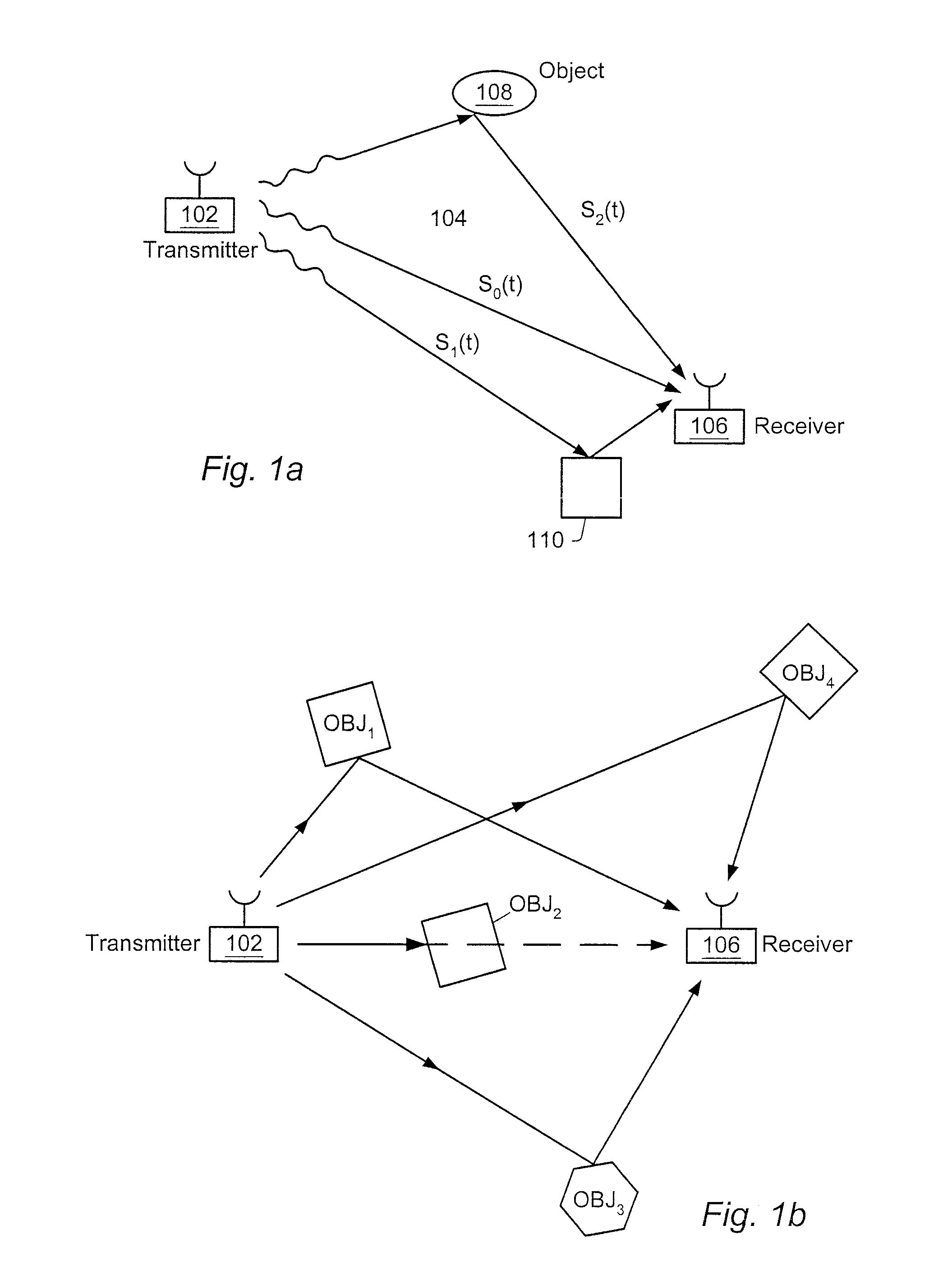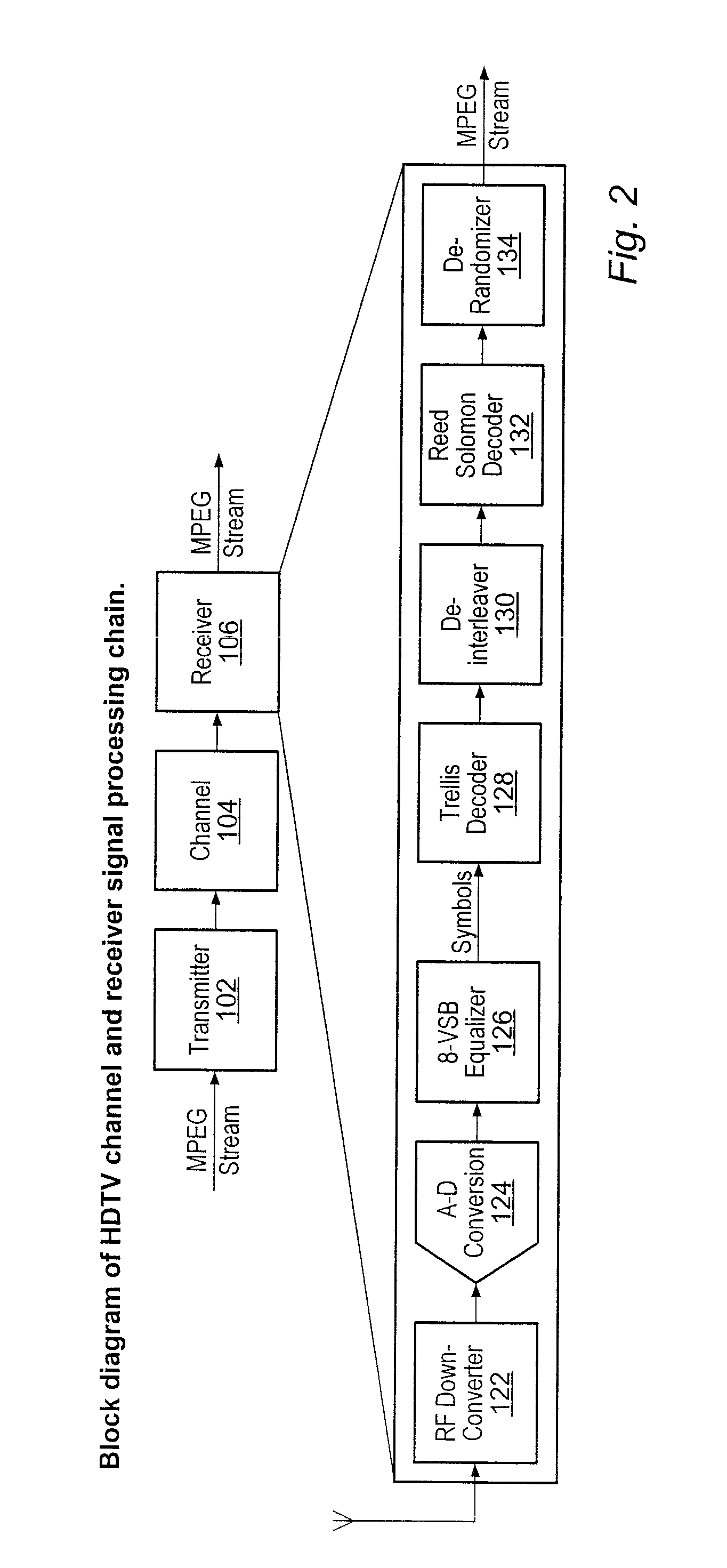Detection of Low-Amplitude Echoes in a Received Communication Signal
a technology of low-amplitude echoes and communication signals, applied in the field of digital telecommunication, can solve the problems of introducing noise into the signal, multipath distortion of the transmitted signal, typical distortion of the tv channel, etc., and achieve the effect of greater time separation
- Summary
- Abstract
- Description
- Claims
- Application Information
AI Technical Summary
Benefits of technology
Problems solved by technology
Method used
Image
Examples
Embodiment Construction
[0075]Incorporations by Reference
[0076]The following patent applications are hereby incorporated by reference in their entirety as though fully and completely set forth herein:
[0077]U.S. patent application Ser. No. 12 / 015,274, filed on Jan. 16, 2008, titled “Frequency Domain Equalization of Communication Signals”, invented by Jan D. Garmany and William H. Hallidy, Jr.;
[0078]U.S. patent application Ser. No. 10 / 621,293, titled “Frequency Domain Equalization Algorithm”, invented by Jan D. Garmany and William H. Hallidy, Jr.; and
[0079]U.S. Provisional Application No. 60 / 396,819, filed on Jul. 18, 2002, titled “Frequency Domain Equalization Algorithm”, invented by Jan D. Garmany and William H. Hallidy, Jr.
[0080]U.S. patent application Ser. No. 10 / 602,292, titled “Processing System With Interspersed Processors And Communication Elements”, filed on Jun. 24, 2003, invented by Doerr, Hallidy, Gibson and Chase.
[0081]FIGS. 1A and 1B
[0082]FIGS. 1A and 1B illustrate an exemplary communication sy...
PUM
 Login to View More
Login to View More Abstract
Description
Claims
Application Information
 Login to View More
Login to View More - R&D
- Intellectual Property
- Life Sciences
- Materials
- Tech Scout
- Unparalleled Data Quality
- Higher Quality Content
- 60% Fewer Hallucinations
Browse by: Latest US Patents, China's latest patents, Technical Efficacy Thesaurus, Application Domain, Technology Topic, Popular Technical Reports.
© 2025 PatSnap. All rights reserved.Legal|Privacy policy|Modern Slavery Act Transparency Statement|Sitemap|About US| Contact US: help@patsnap.com



